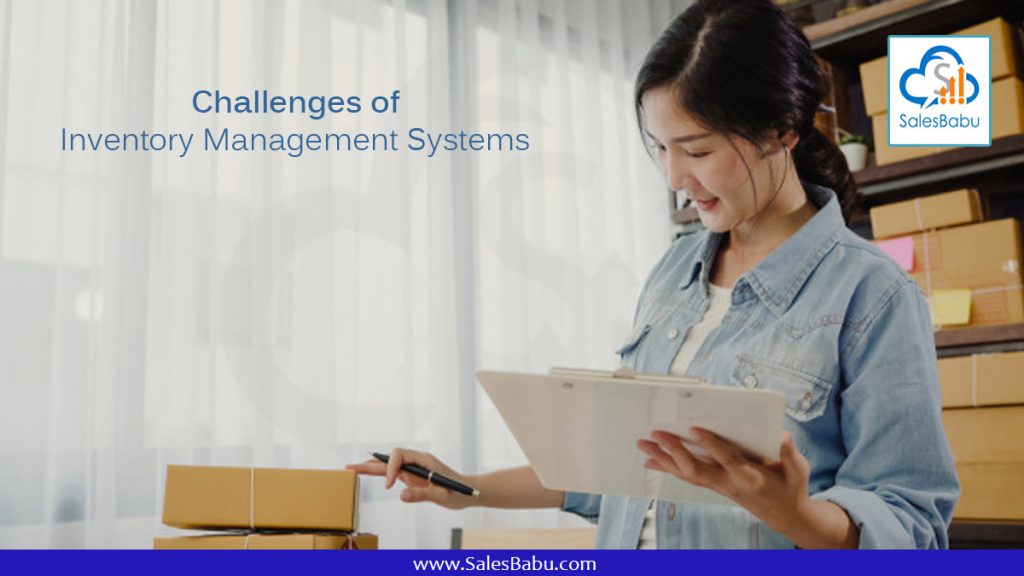With increased online shopping and retail marketing, inventory management system has become the need of the hour. An online inventory management system is an organised and systematic process for controlling the inflow and outflow of our product in the organisation.
The maintenance and upkeep of our inventory are important to ensure that the right amount of inventory is available at the right time and in the right quantity.
Businesses now consider inventory management systems a necessity, and industries ranging from manufacturing to utilities, healthcare, education, and government widely use them.
This material management software has come a long way when it comes to the history of using the inventory system. In the earlier days, businesses managed inventory using a system known as the Cardex system.
People read and updated these cards whenever they moved inventory from a location. In addition to the cards, they maintained books or registers to manually record these transactions and prepare reports.
This system was quite basic and time consuming for the employees and had led to many human errors and product losses.
Next came the credit and debit card for inventory methods which were equally time consuming and prone to errors.
The introduction of new online inventory management system software created a revolution, as intelligent applications now manage inventory, assist in analysis and categorization, and significantly reduce human errors, product damage, and theft.
Key Aspects of Online Inventory Management:
- Service Management: For companies concentrating on delivering services instead of physical products, inventory management software deploys an important role in detecting material expense. Such businesses grant services like cleaning supplies and connect prices to such services, enabling them to calculate the complete cost of service delivery.
- Reorder Point: Inventory management systems can be designed to indicate when it is the right time to reorder products. Such an attribute shields companies from going out of stock or overcommitting their capital to surplus inventory.
- Product Identification: Businesses usually utilize conventional barcodes to input information related to products and orders into inventory management software. Barcoding technology reads these codes and delivers information about the represented products. In modern inventory management software, businesses are increasingly using QR codes and NFC tags for item identification, while smartphones serve as effective scanners. This innovation provides businesses with a cost-efficient way to monitor inventory without the need for expensive dedicated scanners.
- Asset Tracking: Inside the store, products are frequently monitored utilizing barcodes or other identification benchmarks. Lately, inventory management software has elevated its abilities by availing barcode facility, radio-frequency identification (RFID), and wireless technologies for monitoring products. Such an enhanced tracking allows businesses to sustain a rather accurate record of their assets.
Read More – Online Inventory Tracking Software
Challenges of Inventory Management Systems

Inventory management online is a great tool to improve your business productivity and process efficiency when implemented properly.
Organizations face most of the challenges associated with inventory management systems when they fail to follow best practices and continue to rely on manual documentation and inconsistent storage layouts to maintain their stock entries.
A good inventory management system uses automated software approaches to reduce human error and eliminate manual workloads which can cause some of the below issues:-
- Having mismanaged stock count and unorganised process to follow stock upkeep.
- Out-of-stock situations disturb the demand-supply balance and damage customer relationships.
- Manual documentation errors which causes incorrect product and vendors tagging, incorrect no. of spare parts and many such issues.
- Human resource wastage due to repetitive manual ways of inventory management and warehouse look after for product tagging and rotation.
- Inaccurate Data. You should know at any moment, exactly what inventory you have. Those days are gone when the inventory could be counted once a year with an all-hands-on-deck-approach.
- Changing-demand. The demand of the customers is shifting constantly. Keeping demand too much may result in obsolete inventory that you are not able to sell, so keeping little demand will enable you to fulfill customers’ needs.
- Managing warehouse space. The intermediate task is for managing warehouse space. Proper designing and planning with the inventory management software helps to have better control on the timing of the stock deliveries.
These and many other challenges can be avoided if we follow proper ways of inventory management system. Let’s talk more on the benefits of using an online inventory management system.
Benefits of an Inventory management system
Increases sales
A good inventory management system will keep a track of products, vendors, spare parts, stock availability and many other details in a cloud-based centralised database. This database is accessible by every stakeholder in real time.
Once the sales and marketing team clearly know how much of an item is in stock, where it is, and how quickly they can deliver it to the customer, they can make better sales deals and improve customer service levels.
Read More – Efficient Inventory Management System
Reduction of costs
Another benefit of having an online inventory management system is saving on inventory costs. Inventory maintenance and upkeep cost a lot of money to companies. Many traditional businesses incur huge losses due to damage to products, wear and tear due to climate, expiry and other manual mishandling.
Other extensive expenditures are cost due to warehouse rent, staff maintenance, security, transportation and other product handling reasons. The key to minimizing these costs is to have an adequate amount of stock in our warehouse which strikes a balance between the overstocking and understock cases.
Maintaining an appropriate amount of stock reduces stock holding costs and considerably lowers transportation expenses by avoiding the repetitive reordering of the same products.
A good inventory management system helps to understand your sales market trends and keep a track of product ware and tear history to provide better forecasting data for appropriate product ordering.
Also, with proper rotation of goods by maintaining order history and delivery dates, we can considerably reduce our wastage ratio and improve business revenue.
Read More – Reduce Operational Cost With Inventory Management System
Flexibility
The key advantage of a good inventory management system is the ability to be flexible and adapt to situations as they arise. Every business in the economic market whether it’s medicine, transport, education or other will have its risk and unpredictability involved.
Similarly, inventory management businesses have some unpredictable situations like as incorrect shipments, warehouse accidents, manufacturing issues and theft which cannot be avoided and create a major hit on business costs.
With an inventory control system, we can generate numerous metrics which can help us to be more prepared for these situations by analyzing and solving a problem as soon as it occurs.
Demand Forecasting
Demand forecasting is a fundamental key to planning what and when to order so you allocate resources wisely and get the most out of our purchases. Analysis and metrics report in inventory management system help to plan our product storage based on the demand of products, customer preference and many other details which can organise our demand and sales supply chain.
Customer retention
Customer retention is very critical in the modern marketplace, where consumers have more and more options for changing to quick inventory solutions.
With proper analysis on the customer details, required products, vendor delivery commitments, and other information, we can have accurate forecasts for future stock levels, and prevent product stock-outs that can cause customers to go elsewhere.
Also, analysing our customer buying trends and other sales data, we can understand what our customers want and would be needing in the near future. We can create successful sales and marketing strategies to cater to their needs by buying a proper amount of stocks to balance our sales.
Other methods of retaining our customers are through various receipts like Good Receipt notes (GRN) and delivery challans to track product delivery and the no. of products delivered. These receipts act as proof of delivery and return acknowledgement forms help to create transparency with our customers.
With the proper mode of communication over feedback and concerns, inventory management software help to create a better customer relationship with our customers and continue our business inflow.

Warehouse Management System
Online Warehouse inventory management system help to manage inter warehouse transfers, generate reports for products and raw material in each warehouse, analysis on product stock level and other product details at our fingertips which is very useful to manage our regular warehouse work.
On time Delivery
On time delivery is the most important feature of inventory management software systems. With online and retail marketing on the rise, customers are looking for inventory systems which not only organise their daily inventory jobs but also help in on time delivery to its customers.
With these cloud inventory systems, every stakeholder are always aware of the current status of the product in our stocks and the timeline of each delivery. These details help the sales team to provide a realistic outlook on the delivery status and work toward how to provide on time delivery to its customers.
On time delivery is also very important to create an environment of trust and long term relationships with our customers to improve our business revenue.
Best Practices for Inventory Management Systems
We do understand that a good inventory management system can improve the productivity of a business and clearly manage all its inventory limitations, but only if you set it up with some basic essentials during inventory management for your products including:
- Proper location names for warehouses.
- Easy-to-read labels for the warehouses and products.
- Unique item identification numbers
- Units of measure for every product.
- A software solution that effectively monitors and tracks activity for the inventory management.
- Clear, company-wide policies and processes for inventory implementation.
- Trained team to support these policies and software implementations.
Following best practices can be complex and may need a lot of time and money. But it’s just a matter of days in which a good inventory management system can be beneficial for the company. This set-up of a comprehensive, company-wide inventory management system is a long term investment that will pay for itself through better efficiency and a boost in the company’s revenue.
Read More – SalesBabu Inventory Management Software for Inventory Management for SME
Conclusion
The team of people who work with your stock and use your inventory system on a regular basis are the most critical part of establishing a pretty good inventory management system. A well-trained set of resources are always an asset for the business.
You must understand that if you and your team don’t consistently handle inventory and use the inventory management system properly, no matter what software you use, you will experience only frustration and failure in your business.













